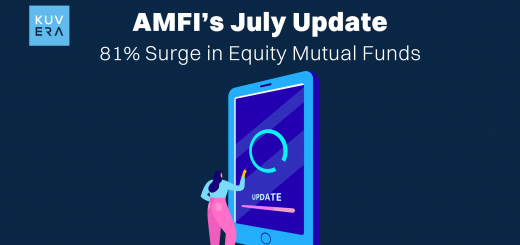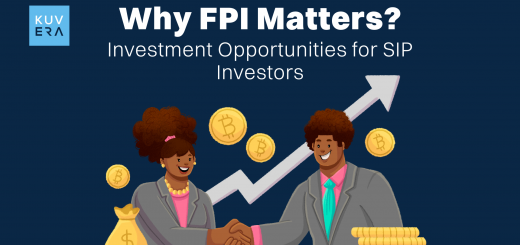Mutual funds are considered as the most efficient investment vehicles by retail and institutional investors. As per AMFI, Large Cap Equity Funds invest primarily in large-market-cap companies, offering stability and sustainable returns. These companies dominate their industries, are less volatile, and perform well during recessions but may underperform in economic recoveries. Mid-Cap Equity Funds invest in mid-sized, developing companies. They are riskier than large-cap stocks but less risky than small-cap stocks, offering higher growth potential.
SEBI’s Definition of Large Cap and Mid Cap Funds
SEBI has categorised mutual funds based on the market capitalisation of the companies they invest in. As per SEBI’s definition:
1. Large-Cap Funds
These funds are mandated to invest at least 80% of their assets in equity and equity-related instruments of large-cap companies, i.e., the top 100 companies by market capitalisation.
2. Mid-Cap Funds
These funds allocate at least 65% of their total assets in equity and equity-related instruments of mid-cap companies, defined as those ranked between 101st and 250th by market capitalisation.
Each of these fund categories serves different investment purposes. While large-cap funds tend to provide stability with moderate returns, mid-cap funds offer higher growth potential but come with increased volatility.
Comparative Analysis: Large Cap vs Mid Cap Funds
The following comparison is based on top-performing large-cap and mid-cap mutual fund schemes in India, as per the latest data from Kuvera.
Performance Comparison (3-Year Returns & Expense Ratios)
| Rank | Large Cap Fund | 3-Year Return | TER (Expense Ratio) | Mid Cap Fund | 3-Year Return | TER (Expense Ratio) |
|---|---|---|---|---|---|---|
| 1 | IDBI India Top 100 Equity Growth Direct Plan | 23.30% | 1.25% | Motilal Oswal Midcap Growth Direct Plan | 29.75% | 0.68% |
| 2 | Nippon India Large Cap Bonus Bonus Growth Direct Plan | 20.14% | 0.74% | HDFC Mid Cap Opportunities Growth Direct Plan | 25.69% | 0.83% |
| 3 | Nippon India Large Cap Growth Direct Plan | 20.14% | 0.74% | ITI Mid Cap Growth Direct Plan | 24.52% | 0.17% |
| 4 | DSP Top 100 Equity Growth Direct Plan | 18.70% | 1.05% | Edelweiss Mid Cap Growth Direct Plan | 24.43% | 0.41% |
| 5 | ICICI Prudential Bluechip Growth Direct Plan | 17.26% | 0.91% | Nippon India Growth Fund Growth Direct Plan | 24.17% | 0.80% |
| 6 | HDFC Large Cap Growth Direct Plan | 17.08% | 1.02% | Nippon India Growth Fund Bonus Bonus Growth | 24.17% | 0.80% |
| 7 | Baroda BNP Paribas Large Cap Growth Direct Plan | 16.06% | 0.82% | Invesco India Midcap Growth Direct Plan | 23.70% | 0.65% |
| 8 | Edelweiss Large Cap Growth Direct Plan | 15.89% | 0.64% | Mahindra Manulife Mid Cap Growth Direct Plan | 23.64% | 0.47% |
| 9 | ITI Large Cap Growth Direct Plan | 15.36% | 0.61% | Sundaram Mid Cap Growth Direct Plan | 22.73% | 0.94% |
| 10 | Invesco India Largecap Growth Direct Plan | 15.28% | 0.75% | Franklin India Prima Growth Direct Plan | 22.16% | 1.02% |
Source: Kuvera, March 24, 2025.
Risk-Return Trade-Off
The table indicates the risk-return trade-off between large cap and mid-cap funds described as follows:
1. Returns
Mid-cap funds have outperformed large-cap funds over the last three years, with the highest-performing mid-cap fund (Motilal Oswal Midcap Growth) delivering 29.75%, compared to the highest large-cap fund (IDBI India Top 100 Equity) at 23.30%.
2. Risk
Large-cap funds offer stability as they invest in well-established companies with consistent earnings. Mid-cap funds, though delivering higher returns, are more volatile due to their exposure to growing companies.
3. Expense Ratios (TER)
Mid-cap funds tend to have slightly lower or comparable expense ratios to large-cap funds. The ITI Mid Cap Growth Direct Plan has the lowest TER at 0.17%, whereas large-cap funds show slightly higher expense ratios (IDBI India Top 100 Equity Growth has 1.25%).
Before making an investment decision, you should take care of the following factors:
1. Diversification
A balanced portfolio should have a mix of large-cap and mid-cap funds, depending on your risk tolerance and financial goals. For example, combining Motilal Oswal Midcap Growth and IDBI India Top 100 Equity Growth may provide both stability and high growth potential.
2. Market Cycles Matter
During economic booms, mid-cap funds tend to outperform. In bearish or uncertain markets, large-cap funds provide stability. During the recent market rally, Motilal Oswal Midcap Growth performed better than ICICI Prudential Bluechip Growth.
3. Expense Ratios
You should consider total expense ratios while making an investment decision, as lower TERs enhance net returns over the long term. For example, ITI Mid Cap Growth Direct Plan with 0.17% TER offers cost efficiency.
4. Historical Trends
Mid-cap funds have delivered higher returns in the past three years, but they demand patience and long-term commitment, like Franklin India Prima Growth Direct Plan has delivered strong long-term returns despite short-term volatility.
5. Liquidity and Stability
Large-cap funds are less susceptible to market downturns and offer greater liquidity, making them ideal for conservative investors. If you are a conservative investor, you may choose a large cap fund like the HDFC Large Cap Growth Direct Plan, which is a reliable choice for stability.
6. Investment Horizon
Mid-cap funds require a long-term perspective, whereas large-cap funds are relatively safer for shorter investment horizons, as the Nippon India Growth Fund is suited for long-term growth investors.
7. Volatility Impact
Mid-cap funds can experience sharp declines, making them suitable for investors with higher risk tolerance and a longer holding period. Sundaram Mid Cap Growth had high returns but also experienced volatility.
Why Large Cap and Mid Cap Funds are Important???
These funds represent some of the best-performing schemes in their respective categories, providing a valuable benchmark for performance analysis. For example, the mix of well-established Asset Management Companies such as HDFC, ICICI, Franklin Templeton and aggressive growth-oriented funds like Motilal Oswal, Nippon India give you varied options and strike the balance between returns and expense ratios helping you choose cost-effective yet better performing funds.
Trends in Large and Mid Cap Fund Streams
As per Cafemutual’s report, 13 new stocks made their place in the large cap classification in December 2024 compared to the classification in December 2023 and the mid-cap stream has 25 new entries in the last one year.
Wrapping Up
As an investor, your decision to choose between large-cap and mid-cap mutual funds should align with your financial goals, risk tolerance, and investment horizon. If you seek stability, large-cap funds should be your primary choice. However, if you are willing to endure volatility for higher potential gains, mid-cap funds can be rewarding in the long run. A prudent approach would be to maintain a diversified portfolio incorporating both categories to balance risk and return effectively.
Interested in how we think about the markets?
Read more: Zen And The Art Of Investing
Watch here: Learn about the F&O craze in India












